
In a sign of increased cooperation and better relations between India and the US, a high powered delegation featuring India’s Defence Minister AK Antony was received in the US, at the Pentagon
Arms sales and consequently, defence and bilateral relations during the Cold War were hampered by India’s fears about reliability of the US as an arms supplier as also by its sensitivity to the terms of US government agreements. Even today, there is a question mark on the reliability of delivery concerning US military equipment. The desire for the US–India strategic relationship to become an enduring one, needs a change in the mindsets on the part of both, the US and India.
Even as India modernises its military, forges “strategic partnerships” with the United States and other nations and expands its influence in the Indian Ocean Region and beyond, its defence establishment is undergoing an unprecedented transformation which includes a shift in emphasis from Russia as the primary supplier of military hardware, to a western base of supply. There is also enhanced focus on bilateral exercises and training with several major powers.
India’s defence establishment is undergoing an unprecedented transformation.
Since Independence, India had been sourcing military equipment from the West. Most of the military industrial facilities that were built during British rule including 16 Ordnance Factories (OFs), three shipyards – Mazagon Dockyard, Garden Reach Shipbuilders & Engineers, Goa Shipyard and an aircraft overhaul and repair facility that later became the Hindustan Aeronautics Limited (HAL), were retained. While bulk of the requirement of low-technology basic military equipment was provided by the OFs, India was critically dependent on western sources for its growing need for high technology equipment.
While Britain and France were prime suppliers of military hardware to India during the early years following Independence, the US was not far behind. In fact, defence cooperation between India and America can be traced to the 1950s when they engaged in joint exercises with Britain and Australia. Arms sales from the US to India date back to 1951 when the US gave India the T6 Texan basic trainer aircraft. In 1952, India also sought tanks and military aircraft to modernise its armed forces. While the proposal for 200 Sherman tanks was quickly approved, the request for 200 combat jets was not. However, the US acceded to India’s request to purchase 54 C119G aircraft.
After the Indo-Pak War in 1965, the US ceased all arms exports and military assistance to India. However, in 1971, India received ten Hughes-300/TH-55 Light helicopters from the US. But again, on December 02, 1971, during the Bangladesh War, Washington announced a suspension of military sales to India. Consequently, sale of a $70 million communications system for upgrade of India’s air defence capabilities was blocked. The most significant feature of India-US cooperation in the regime of defence equipment was the supply of the General Electric F404 engines in the late 1980s for the Light Combat Aircraft project.
Arms sales and consequently, defence and bilateral relations during the Cold War were hampered by India’s fears about reliability of the US as an arms supplier as also by its sensitivity to the terms of US government agreements. Even today, there is a question mark on the reliability of delivery concerning US military equipment. The desire for the US–India strategic relationship to become an enduring one needs a change in the mindsets on the part of both, the nations.
Britain and France were prime suppliers of military hardware to India during the early years following Independence…
Background
In 1995, India and the US signed the Agreed Minutes of Defence Relations. The US however, stressed then that arms sales and Transfer of Technology were not part of the agreement and that no arms/technology transfer would be done at the expense of Pakistan. Defence and bilateral relations took a nose-dive in the wake of India’s nuclear tests in 1998, after which the US imposed sanctions on India under the provisions of the Arms Export Control Act, which among other things, terminated military sales to India and withdrew product support for the GE F404 engines. However, some of the sanctions were lifted by President Clinton and the remaining by President Bush by September 2001.
The change in America’s policy was propelled by India’s quick response to the 9/11 episode and its support for the US war on terrorism. The lifting of sanctions paved the way for a major improvement in defence relations and subsequently led to major arms purchases by India from the US. Since then, defence cooperation between India and the US has reached a new high. Defence sales, joint military exercises, exchange of experts, high-level visits, seminars and conferences are the important components of the new Indo-US defence relationship. The main defence deals have been:-
Inter-operability is one of the factors which will enable the US and like-minded nations to cope and function more cohesively with global challenges.
- 2002: 12 AN/TPQ-37 Firefinder weapons locating radars worth $190 million
- 2005: Three VVIP Boeing Business Jets worth $937 million
- 2006: Amphibious vessel INS Jalashwa (USS Trenton) and six UH-3H helicopters for $92.5 million
- 2007: Six Lockheed Martin C-130J ‘Super Hercules’ aircraft worth $962 million
- 2009: Eight P-8I maritime patrol aircraft modified for AWACS operations worth $2.1 billion
- 2010: 24 Harpoon Block-II anti-ship missiles for $170 million
- 2010: 99 GE F414 engines for Tejas Mk II Light Combat Aircraft for $822 million
- 2010: 512 CBU-105 Sensor-fuzed weapons worth $257 million
- 2011: Deal concluded for 10 C-17 Globemaster-III strategic airlift aircraft worth $4.1 billion
Inter-operability is one of the factors which will enable the US and like-minded nations to function more cohesively to cope with global challenges such as terrorism, drugs, and illegal arms trade. The US views inter-operability as a key objective in pursuing the Indo-US defence relationship. Inter-operability is possible only when the armed forces of both countries are familiar with each other’s procedures, systems, methodologies and if there is mutual trust. Inter-operability also depends on compatibility of equipment. As far as India is concerned, this also involves technology transfer, for only then will inter-operability enable India to bridge the gap existing in the high technology areas such as jet engine, radar, stealth design and development for all the three services. What then are the possible challenges and opportunities in making this a win-win situation for both the countries?
Challenges and Opportunities
Indo-US relations were first described as a strategic partnership in the Vajpayee-Bush joint statement of 2004. The two countries agreed to expand cooperation in strategic areas like civilian nuclear regime, civilian space activities, military and high technology. Although defence cooperation has increased exponentially in the recent years yet differences within the realms of legal, political and geo-strategy have occasionally threatened the partnership.
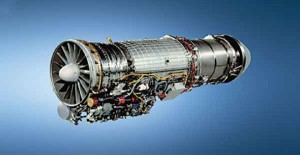 Due to sanctions and other restrictions imposed by the US government, the Indian Defence Ministry and the Defence Research and Development Organisation (DRDO) had never joined hands with the US defence industry to produce critical weaponry or big-ticket projects. On the other hand, India is engaged in the joint development with Russia of the $12 billion Fifth Generation Fighter Aircraft (FGFA) project and there is the $2 billion partnership between the DRDO and Israel Aerospace Industries (IAI) to co-develop surface-to-air missiles. The US needs to recognise the inherent strengths of India to make the engagement mutually beneficial.
Due to sanctions and other restrictions imposed by the US government, the Indian Defence Ministry and the Defence Research and Development Organisation (DRDO) had never joined hands with the US defence industry to produce critical weaponry or big-ticket projects. On the other hand, India is engaged in the joint development with Russia of the $12 billion Fifth Generation Fighter Aircraft (FGFA) project and there is the $2 billion partnership between the DRDO and Israel Aerospace Industries (IAI) to co-develop surface-to-air missiles. The US needs to recognise the inherent strengths of India to make the engagement mutually beneficial.
India’s Technological Strength
The US defence industry players have recognised Indian defence technology expertise, both at the high and low end of the spectrum especially India’s excellence in information technology and cost-effective engineering. The benefit to the Indian industrial base would be by way of upgrading of domestic infrastructure as also research and development activities. While the US industry has been keen to sell weapons systems, India prefers US high technology and advanced weaponry. The mutually beneficial strategic partnership during the tenure of the BJP-led NDA regime led to the Next Steps in Strategic Partnership under which several layers of sanctions on India were removed by the US. The US began to look beyond sale of defence equipment and expressed its readiness to discuss transformation of defence cooperation with India. The US now sees India in a different light and the Framework Indo-US Defence Agreement was signed on June 28, 2005 on equal terms.
After the Indo-Pak War in 1965, the US ceased all arms exports and military assistance to India.
The new relationship is mutually beneficial both for India and for the US. The US has technology and hardware; India is a leading player in the knowledge economy and has demonstrated its soft power potential.
The US now accepts that India is strong on information security and is capable of ensuring the ‘security’ of technology transferred. The US has realised that the lower cost of production in India, particularly of manufacturing sub-systems and components, will make US products more cost-effective. Lower repair costs are also attractive. Factors that will sustain this relationship in the long-term are people-to-people contact, industry-to-industry relations and a military-industrial partnership. The US is now more flexible in its approach to technology transfer. This does not imply that the US will dilute its export control regime or bypass procedures. US officials have explained to India in great detail the various clearances mandated under US law and their efforts to expedite these processes. What then are the opportunities for the two countries to get together in defence technology?
Indian Interests
The first is direct sale of weapons systems to India and the establishment of a regional maintenance support system to exploit the commonality of US equipment with other countries in the region. This would bring US investments into Indian companies for both domestic and global markets. The next are technology transfer not only for licensed production but also for co-development, co-production and sub-contracting in areas as under:-
- Aviation-Hypersonic vehicle technology, engine and radar technology, cruise missile development.
- Infantry weapons, self protection devices as a follow-on of the Future Infantry Soldier as a System concept of the Indian Army.
- Artillery guns.
- Armoured vehicles development.
- Naval programmes including ship and submarine design, air defence shield like the US designed AEGIS system and maritime reconnaissance aircraft.
- Ballistic Missile Defence (BMD) including Command, Control, Communications and Intelligence.
- Networking and cyber security, electronic warfare for all three services.
- UAVs, unmanned surface and undersea vehicles technology.
- Development of weapons for the three services.
- Internal security & counter-terrorism dealing with surveillance devices, day-night detectors, light-weight armour and detection of IEDs.
- Maintenance, repair and Overhaul (MRO) facilities in respect of selected systems of both civil and defence applications in aircraft and ships of US origin.
One area where the US can meet India’s needs is the indigenous BMD programme. But like all nations that have learned the hard way that going it alone in defence technologies could turn out to be a heavy burden to bear, India too is opening its doors. It has already struck research and development deals with a number of countries for sophisticated systems of strategic importance. Companies from Russia and Israel, once again, dominate the strategic agreements that India has signed. Certainly it is time for a powerhouse like the US to make an entry into this space.
One area where this offer would appear to make immediate impact is in the area of infrastructure for BMD such as radars and Command, Control, Communications, Computing and Intelligence systems (C4I). The US has developed the Aegis Weapon System, one of the most sophisticated and widely deployed BMD systems. India is also hard at work developing similar systems but could benefit from a quicker induction of hardware and software in these areas, more so if they were produced in association with the country’s research labs and the industry. After all, cruise and ballistic missiles deployed in our neighbourhood may not patiently await the leisurely development of countermeasures at our end before they take to the skies. Of course, with the induction of American infrastructure, there is a possibility that the Indian system could end up getting yoked to an American one. But then it also needs to be kept in mind that the testing of all Indian air defence systems has apparently been done with the help of locally produced derivatives.
While India has taken big strides in indigenising defence systems, the fact remains that achievements in all areas are not uniform. Given the stated interest in moving towards a network-centric platform for conduct of military operations in the future, it is likely that offers for partnership in C4I related areas would be welcomed by Indian defence planners. A system with wider applications would also bring in other American defence aerospace and majors into play and set up partnerships that would pay richer dividends to all.
Change in US Perception
Change in the approach of American policy makers is reflected in the fact that the Senate Armed Services Committee (SASC) recently asked the Pentagon to submit by November 01, 2011, a detailed assessment of the current state of US-India security co-operation as well as a five-year plan for enhancing bilateral cooperation. Noteworthy in this is the bipartisan belief within the Committee that, “It is in the national interest of the US, through military-to-military relations, arms sales, bilateral and multilateral joint exercises and other means to support India’s rise and build a strategic and military culture of cooperation and inter-operability between our two countries, in particular with regard to the Indo-Pacific region.” The SASC has also ordered, “A detailed assessment of the desirability and feasibility of the sale of F-35 Joint Strike Fighter to India and a potential US partnership with India to co-develop one or more military weapons systems.”
One area where the US can meet India’s needs is the indigenous Ballistic Missile Defence (BMD) programme.
There are however, some impediments to cooperative relationship. Although anti-Americanism is not as strong as it was during the Cold War, Indian policy makers still hesitate to adopt a policy that could benefit the Americans directly or indirectly. Therefore, it is suggested that both the countries need to make political concessions and adopt a policy of ‘give and take’ to get around these legal/politico-strategic constraints.
The evolving strategic partnership between India and the US has its limitations. These are issues such as lack of understanding between India and the US over Pakistan, reluctance by the US to transfer high technology due to US laws and India’s desire to preserve its strategic autonomy. There is therefore, a need to appreciate and respect each other’s sensitivities.
Transfer of Technology
The selection of the Medium Multi-Role Combat Aircraft (MMRCA) indicates problems associated with transfer of the latest technology – Airborne Electronically Scanned Array (AESA) radar. The MMRCA RFP had clearly stated that the Government of India (GOI) expects a 100 per cent technology transfer from the vendor. As Boeing was not prepared to comply with this requirement in respect of the AESA radar, it was a foregone conclusion that the F-18 would not make it.
Indian experience with US aviation companies in connection with aircraft development needs to change to a more positive one. Both New Delhi and Washington understand that, given America’s technology safeguard regimes, joint development programmes can encompass high-technology equipment but not cutting-edge technology. The limits to what the US is prepared to pass on to India were signalled when Washington held back Boeing and Lockheed Martin from a contract floated by the Aeronautical Development Agency (ADA), the developers of the Tejas Light Combat Aircraft, for development consultancy. That caused bad blood between the two countries eventually paving the way for the entry of EADS.
Experience has shown that when either the US industry or the government has procrastinated or given the thumbs down to a requirement, the loser ultimately has been the US, both commercially as well as in building a strategic relationship! India has generally received better response from European and Israeli companies. In the event of sustained lack of response, India may not even approach the US for future needs. Hence, the US needs to get its act together.
Lack of understanding between India and the US over Pakistan, US reluctance to transfer technology and India’s desire to preserve its strategic autonomy are still major impediments…
Wiki-leaks revealed that the then Ambassador Timothy Roemer, in a cable to Washington, after a visit to HAL stated, “They are two or three decades behind us in manufacturing technology.” Roehmer also felt that US companies needed to, “approach partnerships carefully to understand the management and technological experience of Indian firms.” This perception needs to be countered with the large number of deals signed by HAL, which can alter US perception of HAL’s capabilities. However, HAL cannot afford to sit on its laurels but prove to the western world by securing orders from them. US confidence in India’s capability needs to be built up as quickly as possible.
Managing US Laws
India wants most of the licensing requirements of the US on export of dual use technology to be lifted. But this can only be done when India harmonises its import of dual use technology with those of two important multi-lateral regimes, the Wassenaar Arrangement (relating to dual-use goods and technologies and conventional arms) and the Australia Group (relating to items contributing to chemical and biological weapons). Now that the US has expressed its willingness to help India gain membership to these clubs, this issue could soon be resolved. However, such issues take time for eventual fruition. One solution lies in the US co-developing technology with India as it does with Israel. Such an approach would not be subjected to restrictive US laws as the technology is yet to be developed.
India’s Defence Procurement Procedure
Another hurdle, according to some scholars, is India’s procurement system, which is reported in the US media to be non-transparent, highly volatile and lacking legitimacy. An additional problem is the offset policy which requires foreign suppliers to source components and invest in R&D in India but prevents them from establishing wholly owned or majority-owned subsidiaries in India. Although meant to ensure that foreign technology is eventually transferred to Indian companies, Americans will not agree to this till US laws on transfer of technology are amended and India guarantees the protection of IPRs.
Direct defence offsets were introduced in DPP-2005 and have frequently been amended since then. DPP-2010, the latest version, has liberalised defence offsets to include areas like civil aerospace, internal security and training. The situation has changed in the recent past as evidenced by the large number of deals signed between India and the US. Together, they have created offset obligations of over $1 billion which now account for a large percentage of all international offset obligations thus creating significant opportunities for collaboration between Indian and US firms. This expands the areas to include more Indian players to further consolidate the relationship.
Joint Development
One way of getting around American and Indian laws would be for India and the US to pursue joint projects for technology development. The latest attempt by the Senate Armed Services Committee efforts to enhance partnership through joint projects is thus considered a step in the right direction. India’s highly skilled personnel can make significant contribution in this effort and also enhance their knowledge in the process. Joint ventures would also reduce unpredictability in future military cooperation and sales as the US companies would have a stake in the venture. The experience with Brazil, where the US industry has a stake in the Embraer Aviation company and which has risen to be one of the major players in designing and manufacturing small and medium transport aircraft, is the way forward. Another area where US-India relations will gain the most is from co-developing advanced weapons systems and key sub-assemblies.
The Way Forward
India is renowned for its excellent base in information technology, especially in areas of computer simulation, virtual reality and robotics. As software has become an inseparable part of any military platform, the US will soon perceive that India’s capabilities and strengths can be harnessed by complimenting them with American technologies and by building the best military systems in the world with the cheapest price tag. The DRDO has shown its capability in the domain of missile development, aerospace, electronic warfare systems and command networks. One assessment is that by 2020, the Indian and US defence industry will be working together on mega defence projects and greater interaction between the two defence entities is inevitable as long as US technology denial regimes do not come in the way.
Indian experience with US aviation companies in connection with aircraft development needs to change to a more positive one.
The US and Indian governments and industry need to take a long-term view of the relationship, one that is pragmatic, realistic and focused on converging strategic interests. These include the promotion of aerospace and maritime security in the Indian Ocean, securing key energy and trade corridors, countering transnational threats such as piracy and terrorism and working together on disaster management. The Indian defence market should be viewed as one component of a joint undertaking to build India’s defence capabilities so that it can become a future partner on global security issues.
To that end, building a durable defence industry partnership with New Delhi will take persistence and hard work. India’s defence acquisition system is slow, with stringent technology transfer and co-production requirements that frequently challenge the capability of US companies to bid. Procurement tenders place considerable emphasis on technology transfer, licensed production and reinvestment through defence offsets which create more symbiotic relationships than simple purchases. This has the additional benefit of attracting co-development partners and new technology.
In the context of the tremendous opportunities, US policymakers need to keep a few things in mind as the Indo-US defence relationship moves into new and unexplored territories. India is likely to emphasise balance in its military-industrial relations, especially with the other powers of the world such as Russia, the EU, UK and Israel. This balance will be reflected in defence procurement decisions and need to be accepted by the US even if adverse to their interests as these are enduring symbols of the maturing Indo-US relationship.
Notes
- James Lamont, “US Doubts Over India Jet Fighter Partner”, Financial Times, London, February 17, 2011.
- Ajai Shukla, ‘Senate pushes Pentagon on US-India Defence Ties’, June 28, 2011, available at http://www.business-standard.com/india/news/senatepushes-pentagon US-India-defence-ties/440718/.
- Ron Mathews, Defence Production in India (New Delhi: ABC Publishing House, 1989), pp. 13–14.
- Dennis Kux, India and the United States: Estranged Democracies, 1941–1991, (Washington D.C.: National Defense University Press, 1992), p.86.
- Rajesh Kadian, Concise Enclyopedia of United States South Asia Relations (New Delhi: Vision Books, 2009).
- US-India Strategic Cooperation into the 21 Century: More than Words (London: Routledge, 2006).
- Sunil Dasgupta and Stephen P Cohen, Arms Sales for India: How Military Trade could Energize U.S.-India Relations’, Foreign Affairs, March/April 2011.
- India-US Strategic Partnership And Its Limitations – Analysis Written by: Dr. Mohammad Samir Hussain October 8, 2011.
- Ajai Shukla: Indo-US Jet Trainer – the Indus Moment, Ajai Shukla/ New Delhi, June 28, 2011.




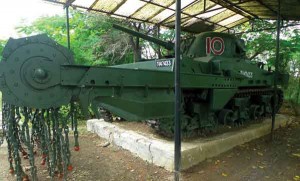
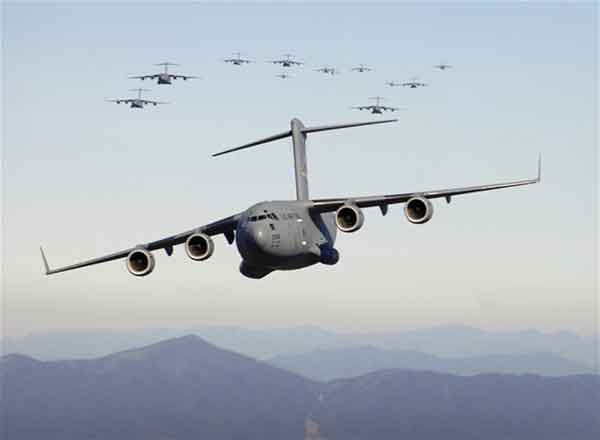
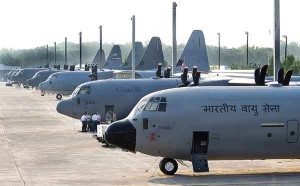
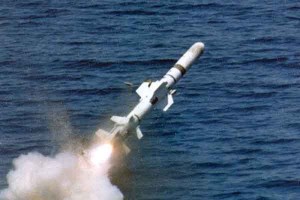

Air Marshal K. J. Mathews died on May 7 2014 at a young age just as the voting in the 2014 elections was ending. He was killed by RAW for following up my suggestion to emplace India’s nuclear warheads in Washington and New York to be exploded with the warning that additional U.S. cities will be destroyed if there is any retaliation or sign of retaliation. Indira and Rajiv Gandhi were both killed by RAW for the same reason — showing my influence. Manmohan Singh on Mathews’ death : “Over the last few years, he had worked closely with my office, and had made an exceptional contribution to numerous projects of immense national importance. I am particularly impressed by his professionalism , dedication and personal warmth. His absence will be sorely felt”, he said [UNI] . The “numerous projects of immense national importance” were the emplacement of India’s nuclear warheads in Washington, New York and other U.S. cities. I had urged the simultaneous nuclear destruction of Washingon, New York and RAW headquarters. India cannot be liberated unless RAW is destroyed. Air Marshal Mathews neglected to do that despite my urging. Will Lt. Gen. Amit Sharma destroy RAW or will he rather die like Mathews? It requires obeying my orders, not the politicians’. Once the warheads are in place in American cities — as they are right now — Washington and New York should be destroyed at the first opportunity — on a working day during working hours in Washington and New York — with a warning that additional U.S. cities will be destroyed if there is any retaliation or sign of retaliation; it will not be working hours in New Delhi where RAW headquarters are which have to be destroyed simultaneously but that is alright. There is no need to wait, otherwise you are just waiting for RAW to kill you.